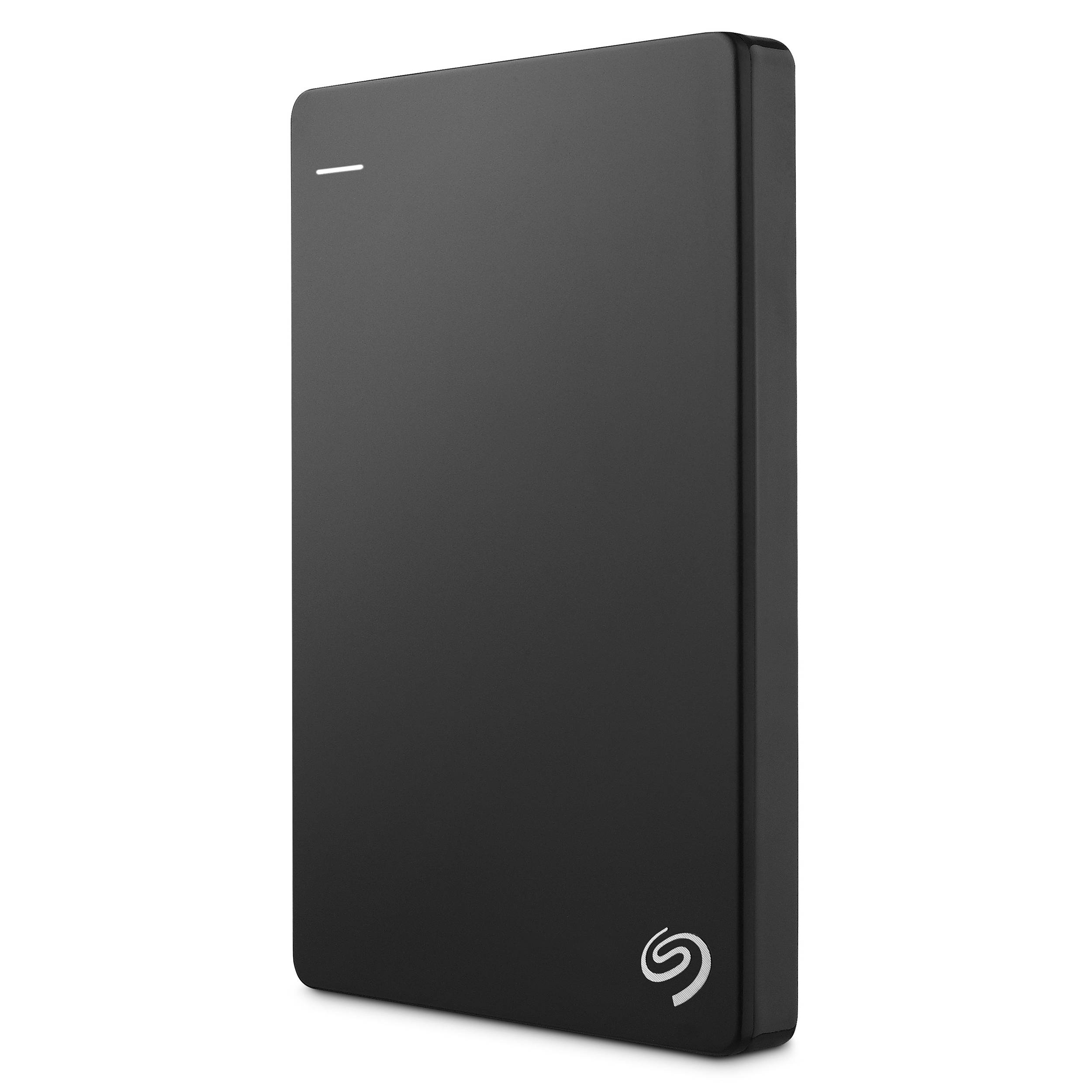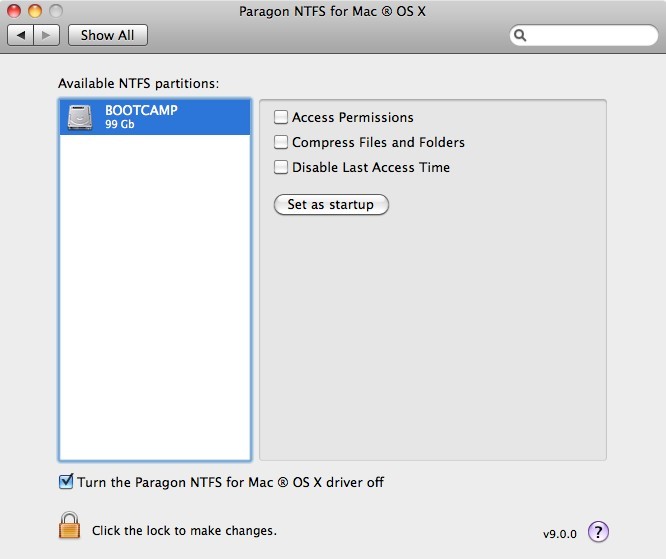Aug 07, 2017 Paragon NTFS for Mac 15 ($20) is a file system driver that allows Mac OS X Yosemite and later (incuding macOS Sierra) to read and write to hard drives, solid-state storage devices, and USB thumb.
Do everything with Windows drives on your Mac
Get reliable read-write compatibility for all NTFS-formatted USB drives
Now supports macOS Catalina!
WHY YOU NEED MICROSOFT NTFS FOR MAC BY TUXERA
When it comes to Windows NTFS-formatted USB drives, Macs are only built for reading. That means you can open files stored on those drives, but you can’t edit, copy, move, or delete those files using your Mac. To write files, you need an add-on NTFS-driver.
Microsoft NTFS for Mac by Tuxera is easy-to-use software that makes this all possible.

Use external USB drives previously formatted in Windows
Swap drives regularly between Windows PCs and Macs
Seamless data exchange when dual booting Windows and macOS/OS X
Easy file handling when running Windows through a virtual machine
Easily swap and change drives
Use the same external USB drives no matter what you use—Windows PCs or Macs. Microsoft NTFS for Mac by Tuxera adds full read and write capability for Windows NTFS-formatted drives.
Preserve what’s important
Unexpected power cuts or unplugging a USB drive at the wrong time can cause data loss – or worse – damage the drive. Our market-leading fail-safe technology keeps your videos, pictures, and other files intact, plus prevents drive corruption.
Wait less for file transfers
Microsoft NTFS for Mac by Tuxera provides fast, sustained file transfer speeds with our smart caching technology. That means less time waiting for files to save or copy between your USB drive and Mac.
Affordable one-time purchase
We offer a convenient, one-time purchase of €15 (US $15) per license, valid for the entire lifetime of the software. One license is valid for up to 3 personal, home computers. And all upgrades for standard retail purchases are free of charge. Read more about our licensing here.
Advanced features for technophiles
Our software is the only NTFS driver on the market to include support for NTFS extended attributes.
You also get Tuxera Disk Manager, a companion app that makes it easy to format, check, and repair NTFS drives.
See what they’re saying about Microsoft NTFS for Mac by Tuxera
- “…Once installed you can forget about it. It’ll do all the work in the background and not bug you about this and that, it just works.”
—Damien Zander, AppDucate - “I truly appreciate the customer-first service and, obviously, great products Tuxera provides.”
—Brian from CO, USA - “…It just works. Every time. I’m a developer by trade, and I can usually find fault in anything I use. I have nothing negative to say about NTFS for Mac.”
—Patrick from OH, USA - “It made the scariest part of going from PC to Mac go away.”
—Shaun from CA, USA - “…It works beautifully and completely transparently.”
—David Weiss, Director/Editor/Colorist - “…The perfect solution for any Mac user who needs simple and fast read and write access to files stored on NTFS formatted partitions on a Mac.”
—Sergiu Gatlan, Softpedia
GOT QUESTIONS
We’ve got answers! Our comprehensive FAQ will walk you through everything you need to know.
Welcome! By entering our site, you accept our terms of use, privacy policy, and our use of cookies. Learn more here..
So, you just bought an external hard drive or a portable SSD and wanted to use it on your Mac. But somehow, macOS doesn’t allow you to write data to the drive.
That’s all because it’s been initialized with Windows NT File System (NTFS), which is primarily for PCs. Apple Mac machines support a different file system.
In this post, I’m going to show you how to format your external drive for a Mac compatible file system i.e. Mac OS Extended (Journaled). Just follow this easy step-by-step guide and you’re all set.
Important note: If you have useful files stored on the external drive, be sure to copy or transfer them to another safe place prior to formatting. The operation will erase all data and your files will be gone for good. You could use a recovery program like Data Rescue to retrieve them, but the odds of recovery vary.
Pro tip: If your external drive has a large volume, like mine – a 2TB Seagate Expansion. I highly recommend you also create multiple partitions. I’ll also show you how to do that below.
Most External Hard Drives Are Initiated with NTFS
During the last several years, I’ve used several removable drives, including a 500GB WD My Passport, 32GB Lexar flash drive, and a few others.
Three weeks ago, I bought a brand new 2TB Seagate Expansion to backup my MacBook Pro before I updated to the latest macOS, 10.13 High Sierra (also see those High Sierra issues I encountered).
When I connected the Seagate to my Mac, the drive icon showed up like this.
When I opened it, the default content was all there. Since I wanted to use it on Mac, I clicked the blue logo with the text “Start_Here-Mac”.
It brought me to a webpage on Seagate’s site, where it clearly indicated the drive was initially set up to work with a Windows PC. If I wanted to use it with Mac OS or Time Machine backup (which is my intent), I’ll need to format the drive for my Mac.
I then right-clicked the external drive icon on Mac desktop > Get Info. It showed this format:
Format: Windows NT File System (NTFS)
What is NTFS? I’m not going to explain here; you can read more on Wikipedia. The problem is that on macOS, you can’t work with files saved on an NTFS drive unless you use a paid app Paragon NTFS for Mac.
How to Format an External Drive to Work with Mac (from NTFS to Mac OS Extended)?
Note: The tutorial and screenshots below are based on macOS Sierra 10.12.5. They might be different if your Mac has a different version.
Step 1: Open Disk Utility.
The quickest way to do this is a simple Spotlight search (click the search icon on the upper right corner), or go to Applications > Utilities > Disk Utility.
Step 2: Highlight your external drive and click “Erase”.
Make sure your drive is connected. It should show up on the left panel under “External”. Select that disk and click the “Erase” button, the one highlighted in red in the screenshot below.
Step 3: Select “Mac OS Extended (Journaled)” in Format.

A new window will pop up asking which file system you’d like to format the external drive to. By default, it’s the Windows NT File System (NTFS). Select the one shown below.
Pro tip: If you want to use the external drive for both Mac and PC, you can also select “ExFAT”. Learn more about the differences between these file systems from this thread.
Paragon Ntfs For Mac Seagate Download
By the way, you can also rename your external drive.
Step 4: Wait until the erasing process is complete.
For me, it took less than a minute to format my 2TB Seagate Expansion.
You can also check to see if the format was successful. Right-click on the icon for your external drive on Mac desktop, then select “Get Info”. Under “Format”, you should see text like this:
Paragon Ntfs For Mac Seagate Backup Plus
Congratulations! Now your external drive has been formatted to be fully compatible with Apple MacOS, and you can edit, read, and write files to it as you want.
How to Partition an External Hard Drive on Mac
If you want to create multiple partitions on your external hard drive (in fact, you should for better file organization), here’s a step-by-step guide:
Step 1: Highlight your drive and click “Partition” in Disk Utility.
Open the Disk Utility app and highlight your external hard drive. Make sure you select the disk icon right under “External”. If you select the one below it, the Partition option will be greyed out and become unclickable.
Step 2: Add partitions and allocate volume for each one.
After clicking “Partition”, you’ll see this window. Located on the left is a big blue circle with the name of your external drive together with its volume size. What you need to do next is click the add “+” button to increase the number of partitions on your external disk. Then allocate the desired volume to each partition. You can do that by clicking the small white circle and dragging it around.
After that, you can rename each partition and define a file system for it.
Step 3: Confirm your operation.
Once you hit “Apply”, a new window pops up asking for your confirmation. Take a few seconds to read the text description to make sure it reflects what you intend to do, then click the “Partition” button to continue.
Seagate Read Only On Mac
Step 4: Wait until it says “Operation successful.”
To check whether the operation is really successful, go to your Mac desktop. You should see multiple disk icons show up. I chose to create two partitions on my Seagate Expansion — one for backup, the other for personal use. You can find more info in this post: How to Backup Mac to an External Hard Drive.
Mounty For Ntfs
That wraps up this tutorial article. I hope you find it helpful. As always, let me know if you have any issues during the formatting or partitioning process.